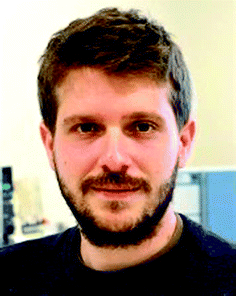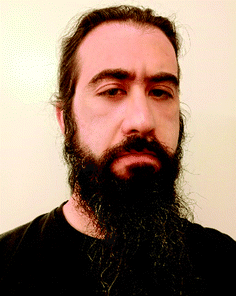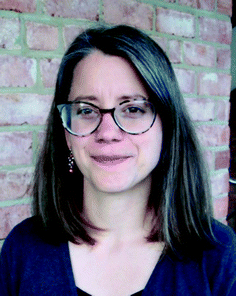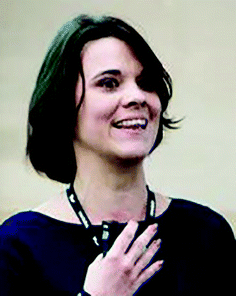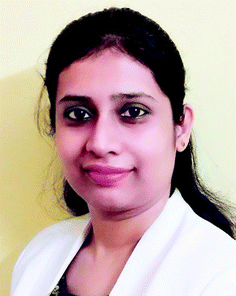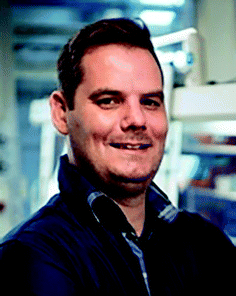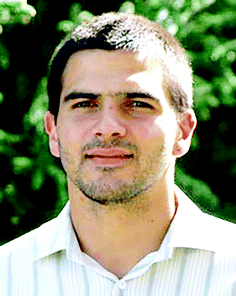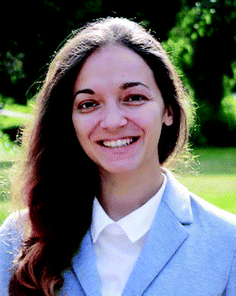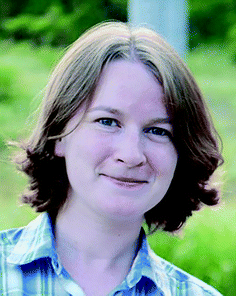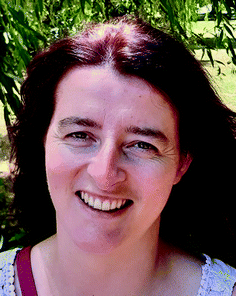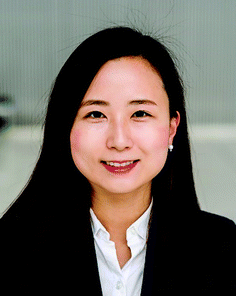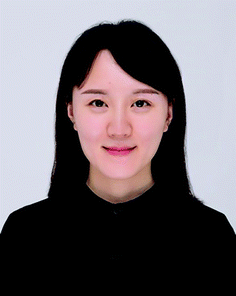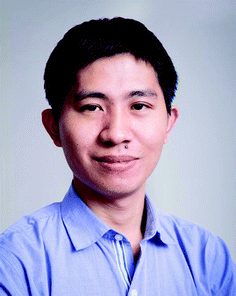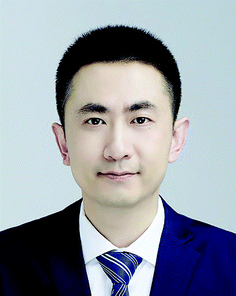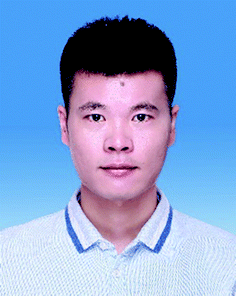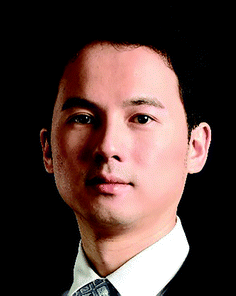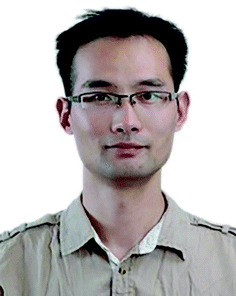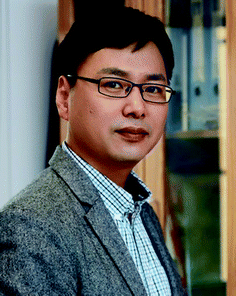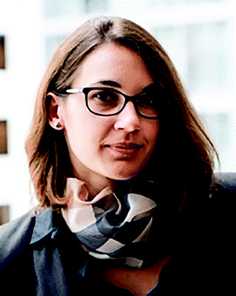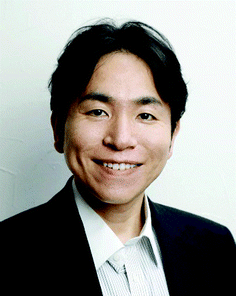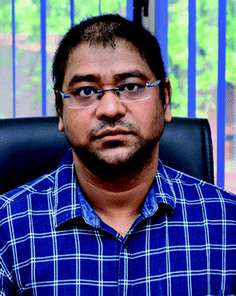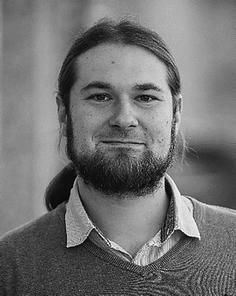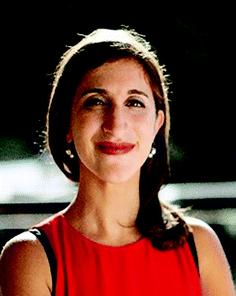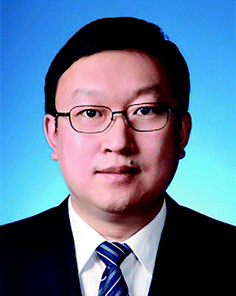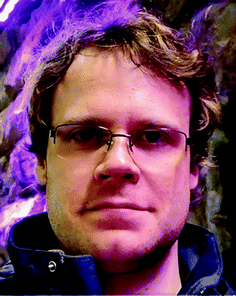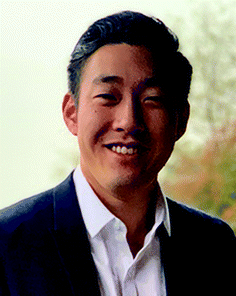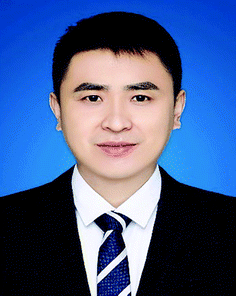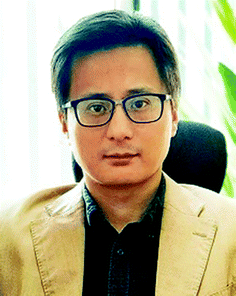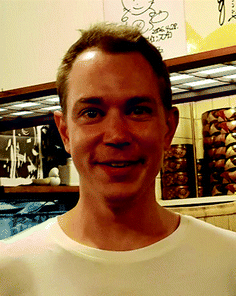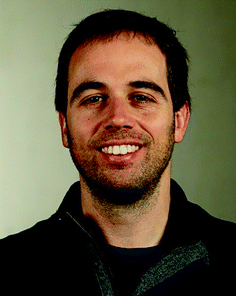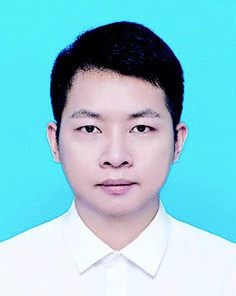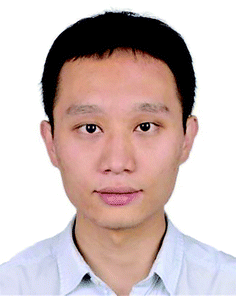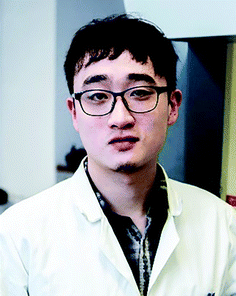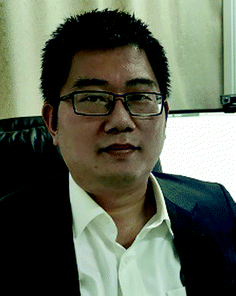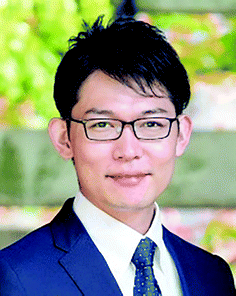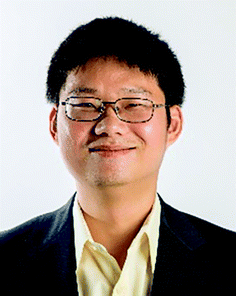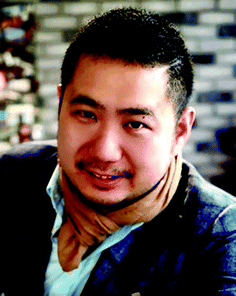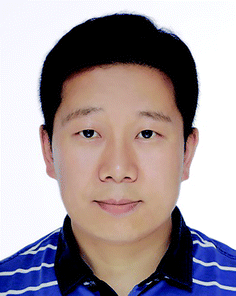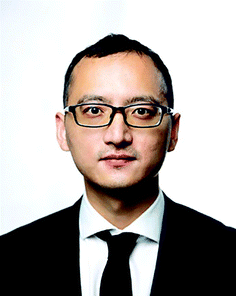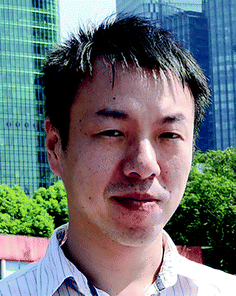Contributors to the Emerging Investigators 2021 issue
Abstract
Our 2021 Emerging Investigators themed issues gather together some of the best research being conducted by scientists in the early stages of their independent careers. Each contributor was recommended as they are carrying out work with the potential to influence future directions in materials chemistry. Congratulations to all of the researchers featured; we hope you enjoy reading this issue.
Dr Miguel Anaya is a Research Fellow at Darwin College and a Leverhulme Early Career Fellow in the Department of Chemical Engineering and Biotechnology at the University of Cambridge. He completed his PhD at the Spanish National Research Council in 2018, with recognition from the GEFES/Spanish Royal Society of Physics for producing the best thesis in Experimental Physics. He leads a subgroup at the StranksLab focused on the modeling, fabrication and characterization of perovskite-based light-emitting devices and sensors.
His contribution to the 2021 Journal of Materials Chemistry C Emerging Investigators collection can be read at DOI: 10.1039/D1TC01595H.
Dr Albert C. Aragonès completed his master's in physics in 2012 (University of Barcelona) and received his PhD in Molecular Electronics (2017) at the same university. After his PhD, he moved, as a postdoctoral researcher, to Dr Díez-Pérez’s group at King's College London (UK). After receiving a Marie Skłodowska-Curie Postdoctoral Fellowship (2019) he moved to Prof. Bonn's Molecular Spectroscopy Group at the Max Planck Institute (MPIP, Germany) under the supervision of Dr Domke. His main research focuses on molecular-scale charge transport phenomena under force fields, and today his research interests have expanded to gathering molecular electronics with plasmon (nano-optical) trapping.
His contribution to the 2021 Journal of Materials Chemistry C Emerging Investigators collection can be read at DOI: 10.1039/D1TC01535D.
Dr Emily Bittle is a research physicist at the National Institute of Standards and Technology in Gaithersburg, MD. She obtained a BS degree in physics at the State University of New York College at Geneseo in 2006 and a PhD in physics at the University of Kentucky in 2013. Her research focuses on probing the fundamental physical processes in electrical devices with an emphasis on device physics, exciton dynamics and charge transport physics in organic semiconductors.
Her contribution to the 2021 Journal of Materials Chemistry C Emerging Investigators collection can be read at DOI: 10.1039/D1TC01539G.
Dr Rachel Crespo-Otero was born and grew up in Havana, Cuba. She did her PhD in Chemistry within a collaborative program between the University of Havana and the Autonomous University of Madrid. Following two postdoctoral positions at MPI-KOFO (Germany) and the University of Bath (UK), she joined the Chemistry department at Queen Mary University of London as a Lecturer in January 2015 and was promoted to Senior Lecturer in 2019. Her research focuses on the development and use of computational techniques to understand excited state processes in organic materials with applications in OLEDs and solid-state lasers.
Her contribution to the 2021 Journal of Materials Chemistry C Emerging Investigators collection can be read at DOI: 10.1039/D1TC02019F.
Dr Torben Daeneke received his PhD in Chemistry from Monash University in 2013. After graduating, he held several postdoctoral appointments and fellowships at the CSIRO, Monash University and RMIT University. In 2018 he joined the department of Chemical Engineering at RMIT as faculty staff. Over his career, Dr Daeneke has made significant contributions to the fields of photoelectrochemical energy conversion, 2D materials research and liquid metal chemistry. He currently holds an ARC Discovery Early Career Researcher Award (DECRA Fellowship) to investigate liquid metal chemistry and its application in 2D material synthesis.
His contribution to the 2021 Journal of Materials Chemistry C Emerging Investigators collection can be read at DOI: 10.1039/D1TC01937F.
Dr Anindita Das received her MSc degree in Chemistry from the University of Calcutta in 2009 and PhD degree from the Indian Association for the Cultivation of Science (IACS), India in 2014 under the supervision of Professor Suhrit Ghosh. Subsequently, she worked as an Alexander von Humboldt Postdoctoral Fellow with Professor Patrick Theato at the University of Hamburg, Germany during 2014–2016. In 2016, she joined the group of Professor E. W. Meijer at the Eindhoven University of Technology, Netherlands for a second postdoctoral stint. In 2017, she returned to IACS as a Faculty Fellow, where she currently holds a position of Assistant Professor in the School of Applied and Interdisciplinary Sciences. Her research interests include supramolecular assemblies of functional π-systems, macromolecules employing halogen bonding and other underexplored noncovalent interactions.
Her contribution to the 2021 Journal of Materials Chemistry C Emerging Investigators collection can be read at DOI: 10.1039/D1TC02420E.
Dr Graham de Ruiter received his MSc in inorganic chemistry from Leiden University in 2008, whereafter he moved the Weizmann Institute of Science (Israel) to pursue his PhD with Prof. Milko E. van der Boom. After three years of post-doctoral research at the California Institute of Technology (with Prof. Theodor Agapie), Graham became a faculty member at the Technion – Israel Institute of Technology where he is an Azrieli Early Career Faculty Fellow and a Horev Fellow supported by the Taub Foundation. Graham currently heads the Inorganic and Materials Chemistry Laboratory at the Technion, where his research interests include (i) the molecular functionalization of 2D materials and (ii) using earth-abundant metals to drive sustainable catalysis.
His contribution to the 2021 Journal of Materials Chemistry C Emerging Investigators collection can be read at DOI: 10.1039/D1TC01534F.
Dr Ludovic Favereau obtained his PhD in 2014 from the University of Nantes under the supervision of Dr F. Odobel. After a postdoctoral fellowship at the University of Oxford with Prof. H. L. Anderson, he was recruited as a CNRS researcher at the Institut des Sciences Chimiques de Rennes (University of Rennes, France) in 2015 in the organometallic: materials and catalysis group with Dr J. Crassous. His research interests notably include the design of chiral organic closed- and open-shell π-conjugated molecules with intense chiroptical properties (circular dichroism and circularly polarized luminescence) to explore the potential of chirality in materials science (OLEDs, OPVs, etc.). Ludovic thanks sincerely all of the students, his collaborators and colleagues in Rennes, France and in the United States, who actively contribute to make his research more interesting and fun.
His contribution to the 2021 Journal of Materials Chemistry C Emerging Investigators collection can be read at DOI: 10.1039/D1TC03019A.
Dr Larisa Florea studied organic chemistry and chemical engineering at the Polytechnic University of Timisoara, Romania (BSc Hons). In 2009 she joined the Adaptive Sensors Group at Dublin City University where she earned her PhD in materials chemistry under the supervision of Prof. Dermot Diamond and Dr Fernando Benito Lopez. In 2018, Larisa was the recipient of an Irish Research Council Laureate Starting award, followed by an ERC Starting grant, enabling her to establish an independent research group as Assistant Professor in Chemistry and Materials Science in the School of Chemistry and AMBER, Trinity College Dublin. Larisa's expertise combines stimuli-responsive materials, 3D fabrication, microfluidics, wearable platforms, sensors and biosensors.
Her contribution to the 2021 Journal of Materials Chemistry C Emerging Investigators collection can be read at DOI: 10.1039/D1TC01796A.
Dr Alex Gibbs completed her MPhys (which she arrived at via a transfer to a joint chemistry–physics degree from her original chemistry programme) at the University of St Andrews in 2008. She stayed there for her interdisciplinary PhD with Prof. P. Lightfoot and Prof. A. P. Mackenzie on emergent states in transition metal oxides. Following this, she took up opportunities for research in Japan (at the University of Tokyo and RIKEN) and Germany (Max Planck Institute for Solid State Research in Stuttgart) with Prof. Hidenori Takagi. She then moved to the ISIS Neutron and Muon Source in Oxfordshire to follow her continued interest in high resolution neutron diffraction. These research streams have now converged in her EPSRC Early Career Fellowship at St Andrews, in association with the Crystallography Group at ISIS. Her research is at the chemistry–physics boundary, studying structure–property relationships in quantum and functional materials.
Her contribution to the 2021 Journal of Materials Chemistry C Emerging Investigators collection can be read at DOI: 10.1039/D1TC02070F.
Dr Anne A. Y. Guilbert is a Materials Science Engineer from the Grenoble Institute of Technology (France). She also received a MSci from the Grenoble Institute of Technology and TU Darmstadt (Germany). She obtained her PhD from Imperial College London (UK). She was awarded both the Doctoral Prize and Postdoctoral Fellowships from the UK Engineering and Physical Sciences Research Council (EPSRC). Currently pursuing new interests in machine learning at a company in Berlin, Dr Guilbert's research focuses on studying and exploring the structure and dynamics of semiconducting organic materials for photovoltaic and photocatalytic applications using various neutron scattering and simulation techniques.
Her contribution to the 2021 Journal of Materials Chemistry C Emerging Investigators collection can be read at DOI: 10.1039/D1TC01813B.
Dr Grace Han was born in South Korea and graduated from POSTECH with a BS in Chemistry. She obtained her PhD in Chemistry at MIT in 2015 and joined the Department of Materials Science and Engineering at MIT as a postdoctoral associate. Grace started her independent career as an assistant professor at the Department of Chemistry at Brandeis University in 2018 and was appointed to the Landsman Career Development Chair in the Sciences. Her research interests span energy conversion and storage, molecular switch chemistry, phase transition of materials and atomic-resolution molecular imaging.
Her contribution to the 2021 Journal of Materials Chemistry C Emerging Investigators collection can be read at DOI: 10.1039/D1TC01472B.
Dr Su-Ting Han is a professor at Shenzhen University. She received her PhD degree in Physics and Materials Science from the City University of Hong Kong. After graduation, she worked at the City University of Hong Kong as a postdoctoral fellow. She was a visiting professor in the Department of Electrical Engineering and Computer Science, University of Michigan. Her research is mainly engaged in the development of novel memory devices (memristor and flash memory) and their application in neuromorphic computing.
Her contribution to the 2021 Journal of Materials Chemistry C Emerging Investigators collection can be read at DOI: 10.1039/D1TC01463C.
Dr Le He received his bachelor degree from Nanjing University in 2008. He obtained a PhD degree in 2013 from the University of California, Riverside, under the supervision of Prof. Yadong Yin. He then worked with Prof. Geoffrey A. Ozin as a Banting postdoctoral fellow at the University of Toronto, before joining the Institute of Functional Nano & Soft Materials (FUNSOM) at Soochow University as a professor in 2015. His research interests include functional nanomaterials, smart optical materials and the photocatalytic reduction of carbon dioxide.
His contribution to the 2021 Journal of Materials Chemistry C Emerging Investigators collection can be read at DOI: 10.1039/D1TC01543E.
Dr Jiang Lihong is an associate researcher at the Changchun Institute of Applied Chemistry, Chinese Academy of Sciences. She is engaged in research into inorganic luminescent materials. At present, her interest is mainly in the design and development of super broadband near infrared LED light sources which can be used in intelligent terminals.
Her contribution to the 2021 Journal of Materials Chemistry C Emerging Investigators collection can be read at DOI: 10.1039/D1TC01508G.
Dr Yuze Lin is currently a professor at the Institute of Chemistry, Chinese Academy of Sciences (ICCAS). He received his BS degree in chemistry from the Beijing Institute of Technology in 2009 and his PhD degree in polymer chemistry and physics from ICCAS in 2014. Before he joined ICCAS as a principal investigator in 2019, Dr Lin conducted postdoctoral research at the University of Nebraska – Lincoln and the University of North Carolina at Chapel Hill. Now, his research interests include organic/hybrid optoelectronic materials and devices for applications in energy harvesting and sensing.
His contribution to the 2021 Journal of Materials Chemistry C Emerging Investigators collection can be read at DOI: 10.1039/D1TC01536B.
Dr Haifeng Ling received his PhD in organic electronics from the Nanjing University of Posts and Telecommunications (NJUPT) in 2017. He then worked as a postdoctoral fellow in Prof. Feng Yan's group at the Hong Kong Polytechnic University. He joined the Institute of Advanced Materials (IAM) at NJUPT in 2019. He is supported by the Alexander von Humboldt Foundation to carry out postdoctoral research with Dr Paschalis Gkoupidenis at the Max Planck Institute for Polymer Research. His research interests focus on organic flexible neuromorphic electronics.
His contribution to the 2021 Journal of Materials Chemistry C Emerging Investigators collection can be read at DOI: 10.1039/D1TC01660A.
Dr Chuan Liu is a Professor at Sun Yat-sen University, China. He received his bachelor degree from Tsinghua University in China and his PhD degree from the University of Cambridge in the UK. He then worked at the National Institute for Materials Science (Japan) and at Dongguk University (Korea). He mainly studies organic and oxide semiconductors, thin-film transistors, printed circuits and device physics, in particular charge injection and charge transport in nonideal transistors.
His contribution to the 2021 Journal of Materials Chemistry C Emerging Investigators collection can be read at DOI: 10.1039/D1TC02215F.
Dr Yao Liu is a Professor at the Beijing Advanced Innovation Center for Soft Matter Science and Engineering at Beijing University of Chemical Technology (BUCT). He obtained his PhD degree in polymer chemistry and physics from the Institute of Chemistry, Chinese Academy of Sciences (ICCAS) in 2013. He then moved to the Polymer Science and Engineering Department (PSE) at the University of Massachusetts, Amherst as a postdoctoral research associate. He joined BUCT in 2018 as a full Professor. His current research focuses on organic/polymer semiconductors and devices, perovskite functional materials and devices, hard–soft materials interfaces and morphology characterizations of soft matter.
His contribution to the 2021 Journal of Materials Chemistry C Emerging Investigators collection can be read at DOI: 10.1039/D1TC01648B.
Dr Zhenda Lu is currently a Professor in the College of Engineering and Applied Sciences, Nanjing University, China. He obtained his PhD from the University of California, Riverside in 2012. He then worked as a postdoctoral researcher in the Department of Materials Science and Engineering at Stanford University. His current interests focus on nanoparticle synthesis and assembly, nanofabrication and optical micro-spectroscopy.
His contribution to the 2021 Journal of Materials Chemistry C Emerging Investigators collection can be read at DOI: 10.1039/D1TC01379C.
Dr Jovana V. Milić is presently Assistant Professor and Group Leader at the Adolphe Merkle Institute of the University of Fribourg in Switzerland since September 2020. She obtained her PhD in the Department of Chemistry and Applied Biosciences of ETH Zurich with Prof. François Diederich in 2017 and, since then, she has worked as a postdoctoral researcher and scientist in the Laboratory of Photonics and Interfaces with Prof. Michael Grätzel at EPFL. Her research has involved the development of functional (supra)molecular materials for energy conversion, with a particular focus on layered hybrid materials and photovoltaics.
Her contribution to the 2021 Journal of Materials Chemistry C Emerging Investigators collection can be read at DOI: 10.1039/D1TC01533H.
Dr Tsuyoshi Minami obtained his PhD degree from Tokyo Metropolitan University in 2011. During his PhD research, he worked at the University of Bath as a collaborative researcher. Between 2011 and 2013, he was a Postdoctoral Research Associate at Bowling Green State University. In 2013, he was appointed as a Research Assistant Professor at the same university. Thereafter, he proceeded to Yamagata University as an Assistant Professor in 2014. He was appointed as a Lecturer at the University of Tokyo in 2016 and he has been an Associate Professor since 2019 at the same university. His research interests are supramolecular analytical chemistry and self-assembled materials.
His contribution to the 2021 Journal of Materials Chemistry C Emerging Investigators collection can be read at DOI: 10.1039/D1TC01542G.
Dr Prakash Chandra Mondal is an Assistant Professor of Chemistry at the Indian Institute of Technology (IIT) Kanpur. He obtained his MSc in Chemistry at IIT Kharagpur and his PhD from the University of Delhi, and then worked as a post-doctoral researcher at the Weizmann Institute of Science, Israel and the University of Alberta, Canada. Before returning to India, he was a Marie-Curie Post-doctoral Fellow at the University of Valencia, Spain. The team explores surface chemistry, molecular electronics and spintronic devices for various applications. He enjoys time with his 1.5-year-old baby girl, Evana, and cooking various cuisines.
His contribution to the 2021 Journal of Materials Chemistry C Emerging Investigators collection can be read at DOI: 10.1039/D1TC01283E.
Dr Fabian Panzer is Habilitation candidate and leads the Perovskite Subgroup within the Soft Matter Optoelectronics group at the University of Bayreuth. He completed his Diploma in Physics in 2013 at the University of Bayreuth, where he also obtained his PhD in 2016. His research focuses on understanding the processing of emerging semiconductors, such as halide perovskites or organic semiconductors, for application in optoelectronic devices like solar cells or X-ray detectors.
His contribution to the 2021 Journal of Materials Chemistry C Emerging Investigators collection can be read at DOI: 10.1039/D1TC01554K.
Dr Lisa V. Poulikakos is an Assistant Professor in Mechanical and Aerospace Engineering at UC San Diego. Her research furthers the science of nanophotonic materials to controllably enhance, probe and influence nanoscale light–matter interactions. She received her PhD from ETH Zürich, where she introduced an original theoretical and experimental technique enabling the rational design of chiral nanophotonic systems. Her postdoctoral research at Stanford University focused on developing functional nanophotonic surfaces for cancer tissue diagnostics. She received the ETH Medal for outstanding doctoral theses, the L’Oréal USA For Women in Science Postdoctoral Fellowship and the Swiss National Science Foundation Early Postdoc Mobility Fellowship.
Her contribution to the 2021 Journal of Materials Chemistry C Emerging Investigators collection can be read at DOI: 10.1039/D1TC02030G.
Dr Liang Shen received his bachelor degree and PhD from Jilin University in 2004 and 2009, respectively. He engaged in postdoctoral research in the group of Prof. Jinsong Huang in University of Nebraska – Lincoln. He was made a full professor in the College of Electronics Science and Engineering of Jilin University in 2016. His current research in the State Key Laboratory of Integrated Optoelectronics is focused on high-performance photoelectric conversion devices and systems, including solar cells, photodetectors and X-ray detector arrays, trying to develop applications in imaging and optical communication, and so on. Up to now, he has published more than 170 SCI-indexed papers and has a h-index of 37.
His contribution to the 2021 Journal of Materials Chemistry C Emerging Investigators collection can be read at DOI: 10.1039/D1TC01367J.
Dr Jonathan Skelton is a UKRI Future Leader Fellow in the Department of Chemistry at the University of Manchester. His group's research combines Chemistry, Physics and Materials Science to explore the relationship between the structure, composition and lattice dynamics of materials and their thermodynamic/kinetic stability and physical properties. The group's recent work focusses on using first-principles modelling to establish how the lattice thermal conductivity can be engineered to optimise materials for thermoelectric power, and spans oxides, chalcogenides, pnictides and “hybrid” organic/inorganic materials. The group also works collaboratively on materials for optoelectronic applications and other renewable energy technologies including photovoltaics and batteries.
His contribution to the 2021 Journal of Materials Chemistry C Emerging Investigators collection can be read at DOI: 10.1039/D1TC02026A.
Dr Timothy A. Su is an Assistant Professor in the Department of Chemistry and Materials Science and Engineering Program at the University of California, Riverside. He received his BS in Chemistry from the University of California, Berkeley in 2011, working in Prof. Jean Fréchet's laboratory. Tim obtained his PhD in Chemistry from Columbia University in 2016 as a NSF Graduate Fellow with Prof. Colin Nuckolls. Tim returned to UC Berkeley as a NIH Postdoctoral Fellow with Prof. Chris Chang before starting his independent career in 2019. His laboratory at UC Riverside focuses on the synthesis of inorganic clusters and polymers and exploration of their quantum transport and optoelectronic properties.
His contribution to the 2021 Journal of Materials Chemistry C Emerging Investigators collection can be read at DOI: 10.1039/D1TC02033A.
Dr Yeqiang Tan received his PhD degree from Zhejiang University, Hangzhou, China, in 2013. He is now a professor at the College of Materials Science and Engineering, Qingdao University in China. His research interests include rheological properties and fiber forming of polysaccharides, and the design, synthesis, and luminescence study of natural polymers. He has published over 60 peer reviewed papers in top journals based on his research.
His contribution to the 2021 Journal of Materials Chemistry C Emerging Investigators collection can be read at DOI: 10.1039/D1TC01531A.
Dr Zheng Tang obtained his PhD in Applied Physics at Linköping University, Sweden (2014), on the device physics of organic solar cells. He then completed a two-year Humboldt fellowship at the Dresden Integrated Center for Applied Physics and Photonic Materials, TU Dresden. In 2018, he became a professor at the State Key Laboratory for the Modification of Chemical Fibers and Polymer Materials, Center for Advanced Low-dimension Materials, Donghua University, Shanghai. Currently, he is the leader of a research group focusing on the understanding of the optics, electronics and engineering of organic optoelectronic devices.
His contribution to the 2021 Journal of Materials Chemistry C Emerging Investigators collection can be read at DOI: 10.1039/D1TC00745A.
Dr Vida Turkovic obtained her Dr rer. nat. in 2014 from the Ilmenau University of Technology, Germany. In 2014, she joined Prof. Morten Madsen's OPV group at University of Southern Denmark, and in 2020 she was appointed associate professor. Her research focuses on bioinspired approaches to stabilization of organic semiconductor thin films and energy devices. For her work on additive-assisted stabilization she received the L'Oréal-UNESCO For Women in Science national award in 2019 and the International Rising Talent award in 2020. In 2020 she was awarded the Carlsberg Young Researcher Fellowship. She is a member of SDU's committee on diversity and equality.
Her contribution to the 2021 Journal of Materials Chemistry C Emerging Investigators collection can be read at DOI: 10.1039/D1TC01544C.
Dr Stijn Van Cleuvenbergen obtained his PhD at KU Leuven in the group of Koen Clays, studying the nonlinear optical properties of octupolar chromophores. He then worked as a FWO postdoc developing harmonic light scattering as a tool to study crystallization in situ in the group of Thierry Verbiest at KU Leuven and during a research stay at UC Davis with Zachary J. Smith and Sebastian Hogiu-Wachsmann. In 2019 he became an assistant professor at KULAK, KU Leuven. Although his first love was chemistry, he truly enjoys the interplay between optics, (bio)chemistry and materials science. His research is primarily focused on studying crystal growth in situ.
His contribution to the 2021 Journal of Materials Chemistry C Emerging Investigators collection can be read at DOI: 10.1039/D1TC02007B.
Dr Ignacio J. Villar-Garcia received his Chemical Engineering degree and master’s from the University of Oviedo. He completed his PhD at the University of Nottingham in 2009, under the supervision of Dr Peter Licence, using X-ray photoelectron spectroscopy (XPS) to study ionic liquids and ionic liquid catalytic solutions. Since then, he has held postdoctoral positions at the University of Addis Ababa, Imperial College London and IMDEA Energy in Madrid, where he focused his efforts on the application of different spectroscopic techniques to the study of energy materials. Currently, he works at CIRCE NAPP, the Near-ambient Pressure Photoemission endstation at ALBA Synchrotron.
His contribution to the 2021 Journal of Materials Chemistry C Emerging Investigators collection can be read at DOI: 10.1039/D1TC02866A.
Dr Yujun Xie received his BS degree from Huazhong Agricultural University in 2013 and his PhD degree from Wuhan University in 2018 under the supervision of Professor Zhen Li. In July 2018, he joined the Institute of Molecular Aggregation Science, Tianjin University. He is interested in theoretical calculations and the synthesis of novel organic photoelectric materials with stimuli-responsive fluorescence, room-temperature phosphorescence and thermally activated delayed fluorescence properties.
His contribution to the 2021 Journal of Materials Chemistry C Emerging Investigators collection can be read at DOI: 10.1039/D1TC01540K.
Dr Liang Xu received his BSc degree from China Agricultural University in 2009 and his PhD degree from the University of the Chinese Academy of Sciences in 2014. From 2014 to 2015, he completed his postdoctoral research at Nanyang Technological University. In September 2015, he joined Shantou University. He started his own group in Shantou University in 2018. His group works on the design and synthesis of photofunctional materials with a focus on organic molecular materials with two-photon absorption and two-photon excited fluorescence properties.
His contribution to the 2021 Journal of Materials Chemistry C Emerging Investigators collection can be read at DOI: 10.1039/D1TC01963E.
Dr Yikai Xu is currently an independent Leverhulme Early Career Fellow at Queen's University Belfast. He obtained his BSc degree in Applied Chemistry at the East China University of Science and Technology and completed his PhD research at QUB. Dr Xu is the recipient of the 2019 Kathleen Lonsdale Royal Irish Academy Prize for the most outstanding PhD research in chemical science in Ireland. His research interests are in the preparation and applications of plasmonic nanomaterials, particularly the preparation of hybrid materials containing plasmonic nanoparticle assemblies.
His contribution to the 2021 Journal of Materials Chemistry C Emerging Investigators collection can be read at DOI: 10.1039/D1TC02134F.
Dr Zhou Xu is currently an associate professor at the School of Chemistry and Food Engineering, Changsha University of Science & Technology, China. He obtained his BS degree (2005) in biotechnology and his MS degree (2008) in food science from the Central South University of Forestry & Technology. He earned his PhD degree (2013) in biosensor technology from Jiangnan University, supervised by Prof. Chuanlai Xu. His current research focuses on the design and preparation of magnetic resonance sensing and nanozyme-based sensing.
His contribution to the 2021 Journal of Materials Chemistry C Emerging Investigators collection can be read at DOI: 10.1039/D1TC01524A.
Dr Nobuhiro Yanai is an Associate Professor in the Department of Chemistry and Biochemistry at Kyushu University, Japan. He earned his PhD from Kyoto University in 2011 under Prof. Susumu Kitagawa on guest properties in metal–organic frameworks (MOFs)/porous coordination polymers (PCPs). He was a postdoctoral fellow with Prof. Steve Granick at the University of Illinois at Urbana-Champaign, experiencing colloid and soft matter sciences. He joined Kyushu University in 2012. His current research focuses on the functional chemistry of photo-excited triplet states to develop new materials for photon upconversion and dynamic nuclear polarization.
His contribution to the 2021 Journal of Materials Chemistry C Emerging Investigators collection can be read at DOI: 10.1039/D1TC00287B.
Dr Jing Yu is a Nanyang Assistant Professor in the School of Materials Science and Engineering at Nanyang Technological University, Singapore. He obtained his PhD in Chemical Engineering from the University of California, Santa Barbara in 2012, followed by a postdoc at Caltech and a postdoc at the University of Chicago. The goal of Jing's research is to characterize the dynamic properties of interfaces with hierarchical structures and to gain molecular-level control of soft interfaces to enable the design of integrated, multifunctional interfaces. He is a Singapore National Research Foundation (NRF) Fellow, Class of 2019, which allows him to explore interdisciplinary research in Singapore.
His contribution to the 2021 Journal of Materials Chemistry C Emerging Investigators collection can be read at DOI: 10.1039/D1TC01578H.
Dr Liyang Yu is currently an Associate Professor at the School of Chemical Engineering of Sichuan University. He received his PhD degree in 2012 at Imperial College London (ICL) under the supervision of Prof. Natalie Stingelin, after which he continued to work as postdoctoral research assistant at ICL for one year. He conducted two three-year postdoc research programs at King Abdullah University of Science and Technology (KAUST) and Chalmers University of Technology. His research focuses on the processing of organic semiconductors towards applications such as solar cells, field-effect transistors and thermoelectrics.
His contribution to the 2021 Journal of Materials Chemistry C Emerging Investigators collection can be read at DOI: 10.1039/D1TC01482J.
Dr Liang Zhou obtained his BEng (2002) and PhD (2011) degrees (with Prof. Hongjie Zhang) from Jilin University and the Changchun Institute of Applied Chemistry, Chinese Academy of Sciences (CIAC, CAS), respectively. From 2002, he worked in CIAC as a research assistant, researching the development of device fabrication equipment. After his postdoctoral stay at the University of Hong Kong (with Prof. Chi-Ming Che), he came back to CIAC in 2014 as Associate Professor and was promoted to Professor in 2017. His interests are in the synthesis and application of trivalent rare earth complexes, the design of organic light-emitting diodes and the optimization of device fabrication technologies.
His contribution to the 2021 Journal of Materials Chemistry C Emerging Investigators collection can be read at DOI: 10.1039/D1TC02756E.
Dr Bowen Zhu received his BS degree in chemistry from Jilin University (China) in 2010. He obtained his PhD degree in materials science and engineering in 2016 from Nanyang Technological University, Singapore. His PhD research was focused on flexible pressure sensors and soft electronics. After his postdoctoral training in the Department of Materials Science and Engineering, UCLA, he joined the Department of Chemical Engineering at Monash University, Australia, as a Discovery Early Career Researcher Award (DECRA) fellow funded by the Australian Research Council. He started his independent research career as an assistant professor (Principal Investigator) in the School of Engineering at Westlake University in August 2019.
His contribution to the 2021 Journal of Materials Chemistry C Emerging Investigators collection can be read at DOI: 10.1039/D1TC01512E.
Dr Liangliang Zhu is currently a professor at Fudan University (Shanghai, China). He received a BSc in chemistry from Zhejiang University in 2005 and a PhD from the East China University of Science and Technology under the supervision of Prof. He Tian in 2011. From 2011 to 2013, he worked as a Research Fellow in Prof. Yanli Zhao's laboratory at Nanyang Technological University. In 2013 he joined the group of Prof. Luis M. Campos at Columbia University as a Postdoctoral Research Scientist. He launched his professorship in 2015. He has published over 100 scientific papers. His research interests are mainly focused on self-assembled photofunctional materials.
His contribution to the 2021 Journal of Materials Chemistry C Emerging Investigators collection can be read at DOI: 10.1039/D1TC01605A.
| This journal is © The Royal Society of Chemistry 2021 |

